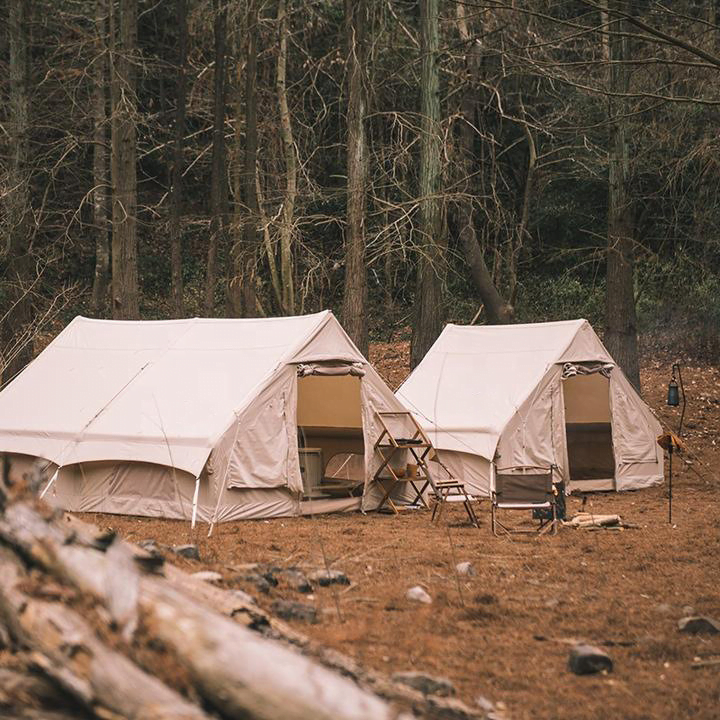Fabrics that are waterproof, water-resistant, or water-repellant prevent liquids from passing through them while allowing the water vapors to pass through. Their innate ability to block out snow and rain while still letting vapor from your sweat evaporate has led to their regular use in making everything from outdoor sports clothing to rainwear, waterproof tents, and a wide range of other applications. There is a difference between water-resistant and water-repellent fabrics.
There is also a difference between water-repellent and waterproof cotton fabrics. If you’ve ever wondered how they differ, then you’re in the right place. My in-depth research has led to a wealth of interesting info on this particular subject so I’m happy to share it with you here.
There are as many types of waterproof fabric as there are questions about them, so I’m going to try to answer some of them for you.
Are waterproof fabrics really waterproof?
As far as water is concerned, they aren’t really completely waterproof. However, due to the technology behind many of these types of functional fabric, under normal usage, the liquid will be less likely to be absorbed and at least gives you enough time to clean it up.
What Makes Fabrics Waterproof?
Generally, they’re fabrics (natural or synthetic) that have been laminated or coated with waterproofing materials like:
- Fluoropolymers,
- Polyurethane (PU),
- Polyvinyl chloride (PVC),
- Rubber,
- Silicone elastomer,
- Wax.
What About Outdoor Clothing?
Basically, outdoor clothing (aka outerwear) has a main function and that is providing protection against the elements. In wet environments, the basic requirement for outerwear is simply to keep you dry. Therefore, your outer clothing layer (as well as your gloves or mittens must resist moisture. But, what exactly are the main terminologies and what the heck do they really mean? Is there any difference? If so, what is it? Right here is where you’ll get the answers to these and a ton of other questions about waterproof, water-repellent, and water-resistant fabrics and clothes.
What Are Waterproof Fabrics & What Can They Do?
The definition of waterproofing is to make a material impervious to water. There are two basic methods for measuring a fabric’s actual waterproofness. The first one is a simulation of rain and the other one subjects the fabric to hydrostatic pressure where the minimum value at its surface without leaking and where the fabric is actually considered rainproof is a 5000 mm water column. For some waterproof materials, that hydrostatic pressure can reach as high as 10,000 to 15,000 mm water column. So, what does this mean? Well, it means that if a water column was placed over a small point, (like a piece of fabric), it would need to reach between 10 to 15 meters before any water would start leaking through the fabric. In addition, the waterproof rating for any materials that are designed for harsh conditions is generally somewhere between a 15,000 and a 30,000 mm water column. Those fabrics are completely waterproof and, in fact, they won’t even leak during a downpour.
What Are Water-Resistant Fabrics & What Can They Do?
Water-resistant fabrics resist wetting by water for a longer period of time than untreated fabrics. They’re good for everything from outerwear use to workwear fabric or even tent fabric. However, they’re clearly not quite as effective as waterproof or even water-repellent fabrics.
What Are Water Repellent Fabrics & What Can They Do?
When water-repellent materials come into contact with water, they form beads on the outside that are easy to remove from the fabric’s surface. What this means is that the water can’t penetrate the material easily. However, after longer contact with that water (or with a much higher amount of pressure), that same material will absorb a certain amount of water. That’s why water-repellent fabrics often tend to be either common materials that have been treated with special hydrophobic chemicals or those with compact textile structures. Although the terms “water-resistant” and “water-repellent” may be used interchangeably quite often, there’s definitely a difference between them.
Which is Better, Waterproof or Water-Resistant?
Simply put, waterproof jackets, for example, offer the highest level of protection from both rain and snow. On the other hand, water-resistant jackets offer a good level of protection, albeit a lower one. So, clearly waterproof is superior if you’re looking for the optimum level of protection from all forms of moisture.

Different Types of Commonly-Used Fabrics
Is Canvas Waterproof?
Canvas is a fabric that’s well-known for being durable, heavy-duty, and quite sturdy. And the blending of synthetic fibers with cotton can make canvas anything from water resistant to waterproof, making it an excellent tent fabric choice.
Is Cotton Duck Waterproof?
Cotton duck is used in a wide variety of applications, from shoes to canvas, to tents, and even sandbags; duck fabrics are woven with two yarns in the warp on one yarn on the weft side. Wax treatment can and often is used to make duck fabric waterproof.
Is Polyester-Canvas Waterproof?
Polyester fabrics are water-resistant, but on their own, they’re not actually waterproof. Since polyester is a polymer, the individual fibers may be waterproof, however, once they’re woven into the fabric, water is capable of soaking right through the gaps in the weave.
To Conclude:
In addition to protecting you from bad weather conditions such as wind and rain, a certain level of breathability is naturally expected when choosing sportswear. And, that’s why breathable fabrics that are waterproof, repellent, or resistant are preferred. These fabrics are not only impervious to water but they also provide a healthy moisture vapor transfer that goes from the inner to the outer side of that material. Waterproof breathable fabrics mean a synergy between protection versus comfort in any environment that’s cold and wet. This makes them perfect for everything from outerwear to tents and everything in between.
